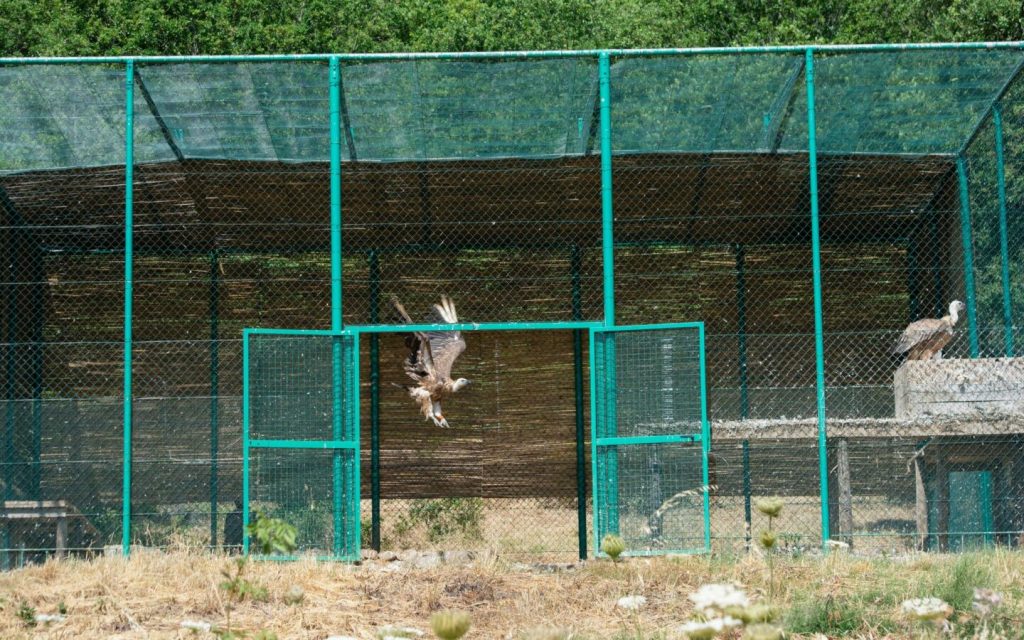Captive breeding can be a very effective conservation tool – the captive breeding network for the bearded vulture, managed by VCF on behalf of the European Association of Zoos and Aquaria (EAZA), under an European Endangered Species Programme (EEP), has been the base for the successful restoration of the species in Europe, with successful reintroduction projects in the Alps, Andalucía and the Grands Causses (France). One hundred years the bearded vulture went extinct in the Alps – captive breeding and successful release of young birds have now led to one of the most celebrated and spectacular wildlife comebacks in recent decades in Europe– there are now 35+ established territories and last year saw a record number (19!) of wild-born fledged young.
The coordinators of the black vulture and Egyptian vulture EEPs are also in the VCF advisory board, and the VCF is keen to explore the potential and relevance of captive breeding in these species to help with conservation projects – especially in the Egyptian vulture, a globally endangered species declining fast almost everywhere throughout its range. The coordinator of this species EEP is Antonin Vaidl, from Prague Zoo.
In the end of 2015 there were 121 western Egyptian vultures in 42 EEP members, including 55 pairs, and these laid a record 32 eggs, of which 19 were fertile. From these, 14 young were successfully raised, 10 of them naturally, by their parents (3 had to be hand-raised). Between 2007 and 2013 the number of young raised had varied between 2 and a maximum of 9. Currently the EEP members breeding Egytpian vultures are Jerez la Frontera (Spain), Paris Zoo, Less Eppes (F), Sofia Zoo (BG), Wildpark Potzberg (D), Vienna Zoo (A), Zlin-Lesna and Prague Zoos (Czech Republic) and the Sharjah Breeding centre (UAE).
The CERM center, outside the EEP, also has an additional 37 birds, which managed to raise three young last year. Outside western Europe, the Israeli National Parks Authority and the Centre for Wildlife Recovery of the Cabildo de Grand Canaria (SP) also have been breeding Egyptian vultures – the last ones of the local island subspecies majorensis.
Six of the young (4 from the EEP and 2 from CERM) were then released in southern Italy in an experiment to test methods – see here.
The VCF is now working closely with the coordinator of the Egyptian vulture EEP to evaluate opportunities to use this ex-situ project to eventually help reintroduction or restocking projects in nature.
And now the 2016 breeding season is just starting for the captive Egyptian vultures – here you can see a female Egyptian vulture laying its egg a few weeks ago in the CERM center in Italy.
https://www.youtube.com/watch?v=d_GjDEX7L2w&feature=youtu.be
Photo Anton Vaidl



